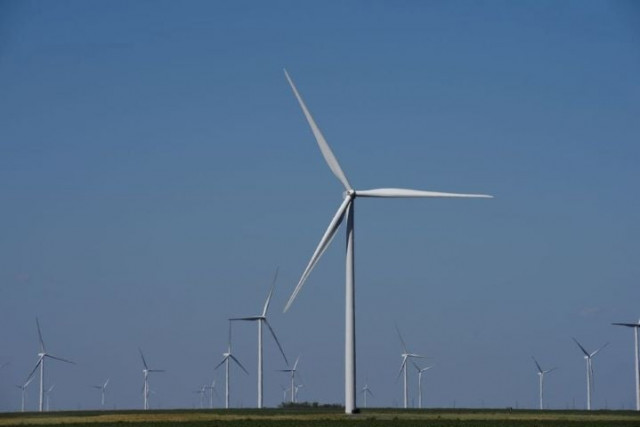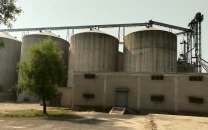Energy conservation and efficiency
Industrialists less sensitive to energy conservation issues, though things changing gradually

There is a saying that the energy conserved is better and cheaper than the energy produced or purchased.
It is truer today than earlier times due to rising energy prices, supply uncertainties and climate effects.
In the West, the movement for energy conservation, efficiency, self-reliance and renewable energy started in the backdrop of the 1973 oil crisis. Since then remarkable changes have taken place in these areas. Energy intensity (energy elasticity of GDP) used to be more than one, which means that to increase GDP by 1%, it required 1-1.5% increase in energy supply or consumption.
Today, in most countries, this index is 0.5 and in some economies, it is even negative – that is the growth rate of energy conservation and efficiency is faster than the growth rate of economy.
This is not true for developing countries like Pakistan due to a variety of factors such as poverty, low education and technology. The sensitivity, however, both among public and government policies, is increasing. A new energy efficiency and conservation policy has been announced, as we shall discuss in the following.
Energy is used in all parts of human life – social and economic. A wide variety of sectors, users, producers and traders are involved.
There are, however, some limited number of areas which consume bulk of the energy, which makes the job of energy conservation and efficiency relatively easier. We will discuss some of the main issues. Due to market and trade reasons, and not due to any indigenous effort, many improvements have taken place mostly in imported items. Today’s cars are more than four times fuel efficient than in the 1980s. And with the advent of electric vehicles, it would be even more.
With LEDs, the lighting sector has been revolutionised. Computers and TV screens are many times more efficient than the monitors of yesteryears. Split ACs are being widely used, which are generally more efficient than the window ACs; the former do both cooling and heating. Heating by ACs is much more efficient than the classical resistance heaters.
Unfortunately, in this area, only richer classes have switched while the poor do not have the house or the money to benefit from it.
Home electrical appliances are more efficient than earlier, but a lot of improvement is required in this sector.
Unfortunately, the building sector is the most energy inefficient and not much has been done in this respect. Conservation has two sides; energy efficient appliances and user-side efficiency. It is no use having energy efficient ACs but wasting the appliance’s energy efficiency in a poorly built house lacking insulation. There is a stock of 20 million houses, half of which are concrete houses. There are 35 million electricity consumers and 7 million gas connections. Annual new electricity connections average 1.5 million.
This would give an idea of waste or conservation potential. However, it may be noted that gas consumption in Pakistan increases in winters largely due to heating and hot water requirements.
In summers, electricity requirement peaks due to cooling requirements provided by ACs and fans. Water consumption increases in summers as well, boosting the water-pumping energy consumption and bringing to fore motor and pump energy efficiency issues.
There are some voluntary energy conservation schemes like LEED (Leadership in Energy and Environment Development). Some remarkable effect of energy savings has been documented in commercial buildings applying the lead criteria, wherein up to 50% savings (more than 275,000 kWh per year) have been obtained.
Voluntary participation may be more effective than legal approaches, which may eventually come in the long run. Although for some recalcitrant and ignorant customers, the carrot and stick approach may work also. Market-based approaches have succeeded.
Space heating and cooling and hot water are most energy consuming and costly processes, more in terms of operating (energy) cost than in capex terms. Both rich and middle classes indulge in wasteful investment in it.
Most energy theft used to be or even continues due to ACs, gas heaters and water geysers. Investment in energy conservation in this area is definitely cheaper than the cost of energy consumed.
The culprit in high energy consumption is the lack of insulation in our homes and commercial buildings. Houses in the 19th century in this part of the world used to be better in energy conservation features like higher heights, ventilation and energy insulating plasters. Roof insulation technology and materials are relatively widely available. Cheaper white colouring of the roof has also found wider acceptance.
Roof insulation can be done in existing houses and thus offer a large potential for further savings. Both wider use and availability of better materials can make a difference.
Wall insulation is a rather difficult issue for existing buildings. However, in new construction, it is neither costly nor difficult to insulate walls. Installation of insulated panels inside cavity may be feasible in existing houses.
The second biggest loss of energy is through glass windows, both in winter and summer. The larger the house, the larger are the windows.
Glazed windows, double or even triple, have become a norm in new buildings and refurbished homes in the West. These windows can be installed both in new and existing houses, the latter through replacing windows.
Solar heaters
In the gas sector, solar water heaters (SWH) offer a great opportunity. SWH hardly consume any roof space as opposed to solar PV panels. About one or two-panel space is required to install a SWH.
Gas heaters and geysers are energy inefficient and are responsible for high gas bills. Gas heaters can be replaced with split ACs, which do both heating and cooling.
For rural areas, biogas and gasifier stoves are cheaper solutions for which there is a large scope and potential.
Another important item is electric motors, which are used in water pumps, fans, compressors and all kinds of industrial machinery. Most of the demand for motors comes from water pumps of up to 1kW capacity. There are a large number of motor manufacturers (400 in number), mostly in the informal sector and are situated in Gujranwala. About 14 million motors are installed in the country, which is expected to increase to 25 million units by 2030. In terms of megawatts, 70% of motor demand may be coming from large motors of 5kW and more. However, even in the industrial sector, motor efficiency averages around 50-55% due to a variety of reasons, which are not related to motor quality only but there are operation and maintenance issues as well.
Optimum efficiency requirements exceed 75%. Thus, there appears to be large potential for boosting energy conservation and efficiency in this area. Both large and small industries require technical input. However, in the large motor sector, industrial users need assistance. In case of small motors, motor manufacturers need assistance. Thus, two different approaches would be required to help improve the situation.
Kitchen goods
Home appliances are yet another major area. This includes kitchen equipment mostly, like food processors, fridges, freezers, etc.
The market of these items has increased tremendously in recent years and continues to do so. It is in million pieces per year and are mostly assembled or partly locally manufactured.
For example, 10 million fans, 1 million ACs and 1-1.5 million refrigerators are sold annually. This is a tremendous conservation and efficiency improvement opportunity.
We have already discussed the space and water heating and cooling. This was, however, from the demand perspective. Producers regulation can cause a lot of improvement in terms of energy conservation and efficiency, thus can save energy.
NEECA has initiated work on a product energy efficiency labeling programme in this respect. Consumers’ awareness can create demand for energy efficient equipment. Consumers are usually after cheaper products and are unaware of the energy issues.
General industrial practices need a lot of attention and improvements. Energy efficiency can affect competitiveness and affect the partner and buyer industries as well.
There are a variety of issues. Pakistani industrialists seem to be more inclined towards seeking incentives and lower energy tariff but are less sensitive to energy conservation and efficiency issues, although things are changing gradually. Both awareness and knowhow are required for which technical assistance would be needed, mostly by SMEs. The foregoing discussion was focused on user/demand side mostly. In a subsequent piece, we will focus on the supply and regulatory side of the issue.
The writer is former member energy of the Planning Commission and author of several books on the energy sector
Published in The Express Tribune, February 21st, 2022.
Like Business on Facebook, follow @TribuneBiz on Twitter to stay informed and join in the conversation.



















COMMENTS
Comments are moderated and generally will be posted if they are on-topic and not abusive.
For more information, please see our Comments FAQ